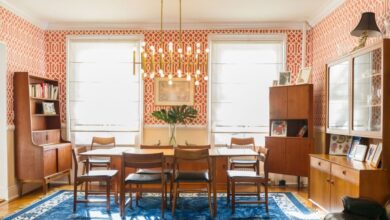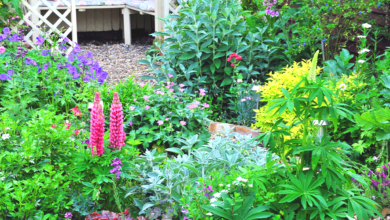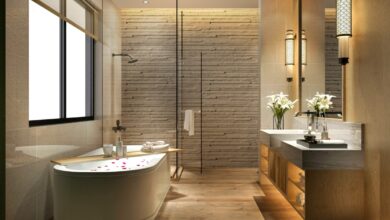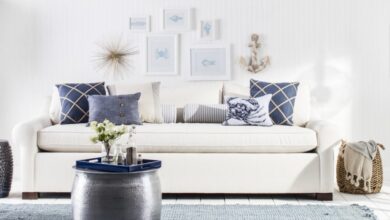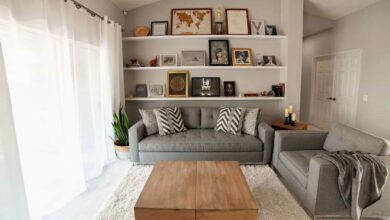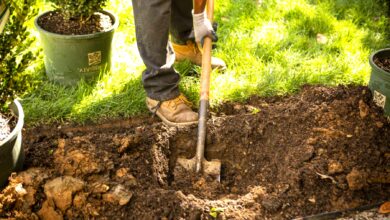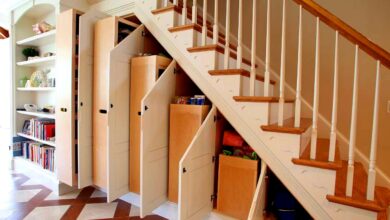12 Eco-Friendly Home Decor Ideas: Sustainable and Stylish
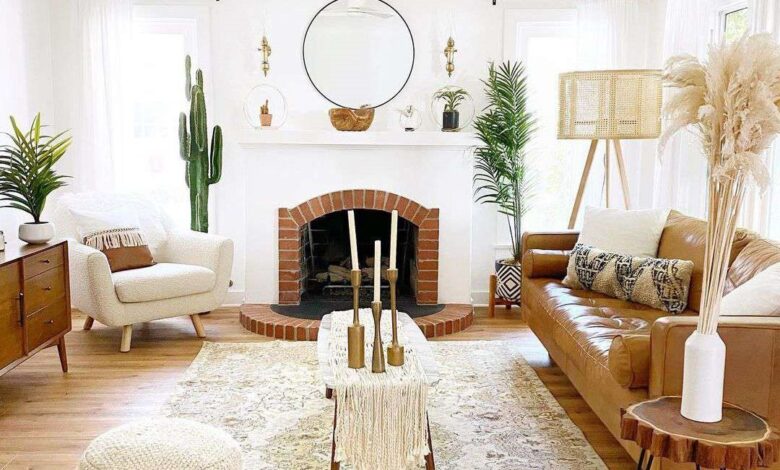
In today’s world, there is a growing consciousness about the Eco-Friendly Home Decor and the need to adopt sustainable practices. As people strive they are extending this mindset to their homes as well. Eco-friendly home decor is gaining popularity as individuals seek to create living spaces that are not only stylish but also sustainable. This article explores the concept of eco-friendly home decor, its benefits, and provides practical tips.
Creating an eco-friendly home is not just about reducing your carbon footprint; it’s also about creating a healthy and sustainable living environment. Eco-friendly home decor combines aesthetics with environmental consciousness, allowing you to design a space that is both stylish and kind to the planet.
Understanding Eco-Friendly Home Decor
Eco-friendly home decor revolves around using sustainable materials, reducing energy consumption, and minimizing waste. It focuses on incorporating nature-inspired elements into the design while avoiding harmful chemicals and excessive resource consumption. By making conscious choices during the design and decoration process, you can transform your home into an eco-friendly haven.
Benefits of Eco-Friendly Home Decor
Adopting eco-friendly home decor practices brings numerous benefits. Firstly, it reduces the environmental impact of your home by conserving resources and minimizing waste. Secondly, it promotes better indoor air quality by avoiding the use of toxic chemicals commonly found in conventional home decor products. Lastly, it creates a healthier living environment for you and your family, leading to improved well-being and comfort.
Choosing Sustainable Materials
One of the key aspects of eco-friendly home decor is selecting sustainable materials. Opt for furniture and accessories made from reclaimed or recycled materials. Look for certifications such as Forest Stewardship Council (FSC) for wood products, which ensures responsible forest management. Consider using bamboo, cork, or linoleum flooring, as these materials are renewable and have a lower environmental impact compared to traditional options.
Energy-Efficient Lighting Solutions
Lighting plays a crucial role in home decor and energy consumption. Opt for energy-efficient LED or CFL bulbs that consume less electricity and have a longer lifespan. Install dimmer switches to adjust lighting levels according to your needs. Consider utilizing natural light by strategically placing windows and skylights to reduce the need for artificial lighting during the day.
Sustainable Furniture and Accessories
When it comes to furniture and accessories, choose pieces that are made from sustainable materials and produced using environmentally friendly practices. Look for certifications like Cradle to Cradle or Green Guard to ensure that the products meet stringent environmental standards. Additionally, consider purchasing second-hand or vintage furniture, as it reduces waste and adds character to your home.
Indoor Plants and Natural Elements (Continued)
Bringing nature indoors is an excellent way to enhance the eco-friendliness of your home decor. Indoor plants not only add a touch of greenery but also improve air quality by purifying the air. Choose low-maintenance plants that thrive indoors, such as spider plants, snake plants, or pothos. Additionally, incorporate natural elements like wood, stone, or jute in your decor to create a warm and inviting atmosphere.
Eco-Friendly Flooring Options
Flooring choices can significantly impact the sustainability of your home. Opt for eco-friendly flooring options such as cork, bamboo, or reclaimed wood. These materials are renewable, durable, and have a lower environmental footprint compared to traditional flooring materials. Another option is to use natural fiber carpets or rugs made from organic materials like wool or sisal.
Water Conservation in Home Decor
Water conservation is an essential aspect of eco-friendly home decor. Install low-flow faucets and showerheads to reduce water consumption. Consider incorporating water-saving features in your bathroom, such as dual-flush toilets or aerated faucets. In the garden, choose drought-tolerant plants and implement efficient irrigation systems like drip irrigation to minimize water waste.
Waste Management and Recycling
Proper waste management and recycling are key components of eco-friendly living. Set up a recycling system in your home with designated bins for different types of waste. Reduce waste by choosing products with minimal packaging and opting for reusable alternatives like cloth napkins instead of disposable ones. Compost organic waste to create nutrient-rich soil for your garden.
Creating a Minimalist and Functional Space
A minimalist approach to home decor not only reduces clutter but also promotes sustainability. Embrace the concept of “less is more” by decluttering and organizing your living spaces. Invest in multifunctional furniture pieces that serve multiple purposes, maximizing the functionality of your home. By simplifying your living environment, you not only create a visually pleasing space but also reduce resource consumption.
Incorporating Renewable Energy Sources
Harnessing renewable energy sources is a significant step towards creating an eco-friendly home. Consider installing solar panels to generate clean energy and reduce reliance on fossil fuels. Solar power can be used to meet the energy needs of your home, from lighting and appliances to heating and cooling systems. By embracing renewable energy, you contribute to a more sustainable future.
The Role of Colors and Textures in Eco-Friendly Design
Colors and textures play a vital role in eco-friendly home decor. Opt for natural, non-toxic paints and finishes that are free from volatile organic compounds (VOCs). Earthy tones like greens, browns, and neutrals create a calming and organic atmosphere. Incorporate textures inspired by nature, such as woven fabrics, natural fibers, and reclaimed wood, to add depth and visual interest to your spaces.
Enhancing Air Quality in Your Home
Maintaining good air quality is crucial for a healthy living environment. Avoid using products that release harmful chemicals into the air, such as synthetic air fresheners or VOC-emitting furniture. Opt for natural air purifiers like indoor plants and use air filters or purifiers to remove allergens and pollutants. Proper ventilation is also essential to ensure fresh air circulation throughout your home.
Conclusion: Eco-Friendly Home Decor
Creating an eco-friendly home decor not only benefits the environment but also enhances your overall well-being. By incorporating sustainable materials, energy-efficient solutions, and mindful practices, you can design a space that is both stylish and environmentally conscious. Embrace the beauty of nature, minimize waste, and make conscious choices to create a home that reflects yourunique sense of style while promoting sustainability.
In conclusion, eco-friendly home decor offers a wonderful opportunity to create a living space that is both sustainable and stylish. By implementing sustainable materials, energy-efficient solutions, and incorporating nature-inspired elements, you can design a home that reflects your values and reduces your environmental impact. Embrace the principles of eco-friendly design and make conscious choices that contribute to a greener and healthier future.
FAQs: Eco-Friendly Home Decor
Are eco-friendly home decor products more expensive?
While some eco-friendly products may have a higher upfront cost, they often provide long-term savings through reduced energy consumption and increased durability. Additionally, investing in quality, sustainable products is a step towards minimizing waste and creating a more sustainable lifestyle.
Can I still achieve a stylish look with eco-friendly home decor?
Absolutely! Eco-friendly home decor encompasses a wide range of styles, from modern and minimalistic to rustic and bohemian. With the growing popularity of sustainable design, there are numerous eco-friendly options available that can cater to your unique taste and aesthetic preferences.
How can I ensure that the furniture I purchase is eco-friendly?
Look for certifications such as Forest Stewardship Council (FSC) or Green guard to ensure that the furniture is made from sustainable materials and produced using environmentally responsible practices. Additionally, consider purchasing second-hand or vintage furniture, which reduces waste and adds a unique touch to your decor.
Are indoor plants necessary for eco-friendly home decor?
While indoor plants are not a requirement, they offer numerous benefits. Indoor plants help improve air quality, add a touch of nature to your spaces, and create a soothing atmosphere. They are a natural and sustainable way to enhance the eco-friendliness of your home decor.
Can I incorporate renewable energy sources without major renovations?
Yes, you can! Start by exploring smaller-scale options such as installing solar-powered outdoor lights or utilizing portable solar chargers. These smaller steps can be a great introduction to renewable energy and can be expanded upon in the future as you consider larger-scale options like solar panel installations.
So Remember, by embracing eco-friendly home decor, you not only contribute to the well-being of the planet but also create a beautiful and sustainable living environment for yourself and future generations. Let your home be a reflection of your values and a testament to the harmony between style and sustainability.



